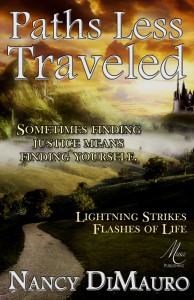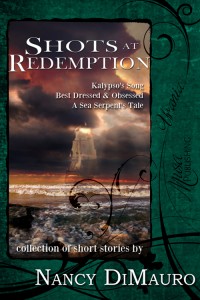Quick! Name some of your favorite science fiction writers. Some of you might have named Asimov or Theodore Sturgeon, while others might have said Orson Scott Card or Kristine Kathryn Rusch. The more literary-minded amongst you probably listed Elizabeth Hand or Jeff Vandermeer. Guess what? They’ve all written tie-ins.
There is a perception among writers that tie-in books–that is to say books that are based in a universe created by someone other than the writer–are of low quality and reside in a kind of literary ghetto, and in some ways that’s even true. Tie-ins are generally hastily written and of poor quality. The plots are often clichéd or trite and the characterization hobbled by the need to not conflict with “canon” and to leave the universe in a state suitable for the next writer to tackle. But these books can often add depth to a beloved universe like Vonda McIntyre’s Stark Trek novels, or continue the story of favorite characters like Dave Wolverton’s the Courtship of Princess Leia, or even fill in plot holes such as Isaac Asimov famously did in Fantastic Voyage.
Like many of today’s fantasy writers, I spent my teen years playing Dungeons and Dragons and so it was with some pleasure that I discovered a set of Dragonlance books on the shelves of my local bookstore. Tie-in books had existed previous to the Dragonlance novels by Margaret Weiss and Tracy Hickman, but in the late 80s they were being pushed in a big way, and began to occupy whole shelves at the local bookstore. Being a fan of both dragons and lances, I devoured Weiss and Hickman’s novels and moved onto the Forgotten Realms series also set in a world that obeyed D&D canon.
It didn’t matter to me that many of these novels were hastily written and clichéd. I was young enough that a plot line revolving around an elf, a dwarf, a wizard, and a warrior meeting in a tavern seemed fresh and new, simply because I hadn’t read enough to know how many authors start their novels that way. At one point, I had more Forgotten Realm novels on my shelves than original novels, and I would incorporate some of the plot lines I read into the D&D campaigns that I ran with a few friends.
In 2009 an event occurred that marked the beginning of my career as a professional writer: I won 1st place in Writers of the Future with a story about a woman with the powers of a Phoenix and a lifespan only a day long. After my win, I immediately started writing novels, hoping to capitalize on my newfound notoriety. Unfortunately, everything I wrote seemed to peter out after 50,000 words (just over half the length of a modern fantasy novel). A year after winning the contest, I had nothing to show for myself other than a few failed manuscripts.
Around that time, Larry Segriff put out a call for his Story Portals site, which would launch with a series about Katya, an assassin who killed with a mixture of extreme competence, sexually aggressive tactics, and magic. This was my first experience with work for hire. He owned the characters and universe and, once I signed his contract, he’d own whatever stories and ideas I created for him as well. Despite that stipulation, I was intrigued. Tracy Hickman and Margaret Weiss had done quite well from Dragonlance, and I told myself this could be an opportunity to get in on the ground floor of a new franchise. I expressed an interest in the project and sent Larry a writing sample, which he quite liked. I was hired.
With a story for Larry under my belt, I decided to tackle other franchises, and when I went down to the local mega-bookstore I found that Warhammer had the most shelf space. I sent them a note telling them I’d won this award, and did they have any stories that needed writing? Laurie Goulding, their acquisitions editor wrote me back to say that he was interested and that I could send him a pitch. When I asked what I should write about, he gave me four potential ideas. I ran out, spent a ton of money buying the rulebooks and then did my best to bone up on the areas he suggested. Instead of sending him a single pitch I sent him four (two of which were accepted and will be in issues of Hammer & Bolter this summer).
Laurie seemed to like my work, and he was one of the best editors I’d worked with (and still is) so I dove full-tilt into the world of Warhammer. The Black Library sends its authors free books whenever they ask to encourage them to become familiar with canon, and I must have read twenty novels in those first few months. Some were bad, but to my surprise and delight, some were amazing. In the latter books, the prose held up to that of any in the genre, and though the focus was necessarily on bloody action scenes, they were dynamic, with well-realized characters. These would be the kinds of books I’d write. Sure, they’d be Warhammer books, but they’d be the best damned Warhammer books out there.
Things have really skyrocketed for me recently. Since writing that first short story for Story Portals, it seems that my career has come full circle. When I was a kid, I had a ton of Tracy Hickman books on my shelves and I now have a novel coming out in a series he anchored. My name will be on the spine of a novel only a few books away from his on the shelves.
Writing tie-ins has given me the confidence to write my own stuff, and I’ve been able to bring the lessons I’ve learned writing them to my own original work. Best of all, the work pays better than pro-rate and is paid in advance. I’ve heard it said that the average number of novels a new writer has to pen before selling one is six. I sold my first novel before I’d even written it.
In terms of ways for a new writer to practice their craft, it’s hard to beat the tie-in market.
Jordan Ellinger is a Writers of the Future winner and Clarion West graduate. His story “Kineater” recently made an appearance in Warhammer:The Gotrek & Felix Anthology and has work upcoming in Hammer&Bolter as well as World’s Collider, a new anthology from Nightscape Press. In his spare time, he helms Every Day Publishing, publisher of Every Day Fiction, Every Day Poets, Flash Fiction Chronicles, and Raygun Revival. To read more, visit his website www.jordanellinger.com or follow him on twitter @jordanellinger.





